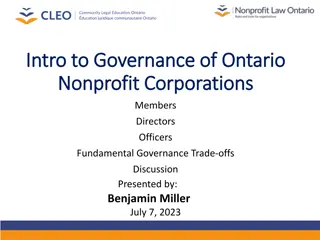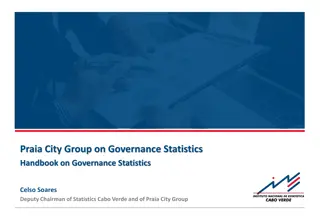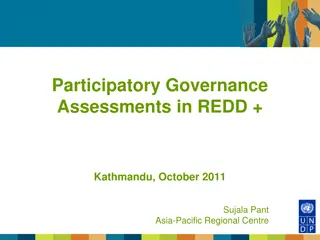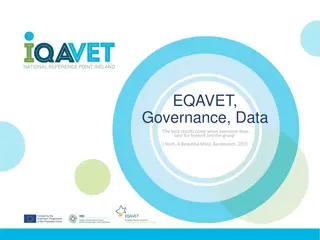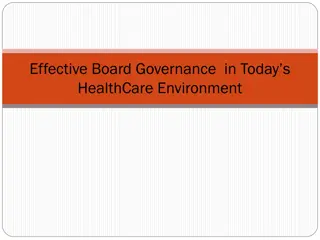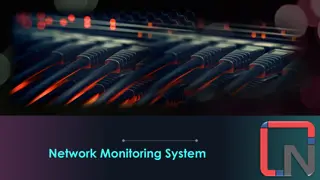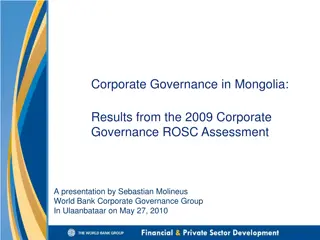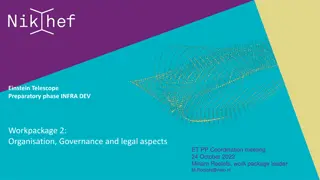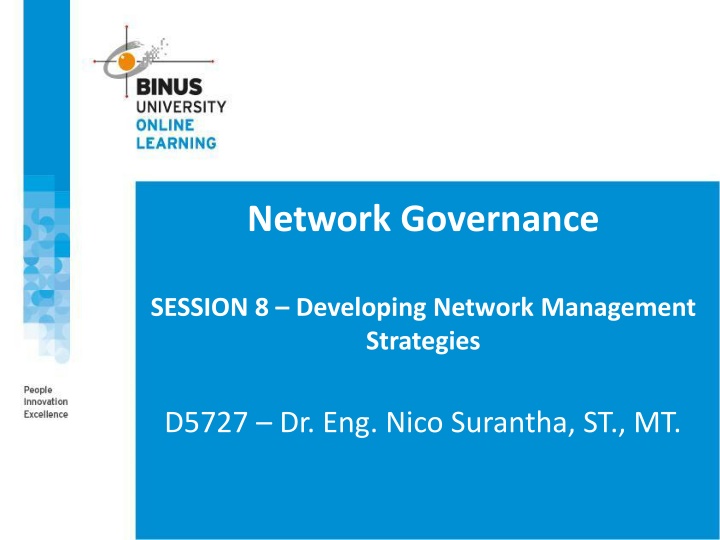
Effective Strategies for Network Management Success
Enhance your understanding of network management with insights on design, architectures, tools, and protocols. Learn how network management helps organizations achieve goals, analyze behaviors, and evolve effectively. Explore proactive approaches, model considerations, and essential processes for optimal network performance.
Download Presentation

Please find below an Image/Link to download the presentation.
The content on the website is provided AS IS for your information and personal use only. It may not be sold, licensed, or shared on other websites without obtaining consent from the author. If you encounter any issues during the download, it is possible that the publisher has removed the file from their server.
You are allowed to download the files provided on this website for personal or commercial use, subject to the condition that they are used lawfully. All files are the property of their respective owners.
The content on the website is provided AS IS for your information and personal use only. It may not be sold, licensed, or shared on other websites without obtaining consent from the author.
E N D
Presentation Transcript
Network Governance SESSION 8 Developing Network Management Strategies D5727 Dr. Eng. Nico Surantha, ST., MT.
OUTLINE 1. 2. NETWORK MANAGEMENT DESIGN NETWORK MANAGEMENT ARCHITECTURES SELECTING NETWORK MANAGEMENT TOOLS AND PROTOCOLS 3.
Network Management Helps an organization achieve availability, performance, and security goals Helps an organization measure how well design goals are being met and adjust network parameters if they are not being met Facilitates scalability Helps an organization analyze current network behavior, apply upgrades appropriately, and troubleshoot any problems with upgrades Bina Nusantara University
Evolution of Network Management Bina Nusantara University
Network Management Requirements Bina Nusantara University
Network Management Model Bina Nusantara University
Network Management Design Consider scalability, traffic patterns, data formats, cost/benefit tradeoffs Determine which resources should be monitored Determine metrics for measuring performance Determine which and how much data to collect Bina Nusantara University
Proactive Network Management Plan to check the health of the network during normal operation, not just when there are problems Recognize potential problems as they develop Optimize performance Plan upgrades appropriately Bina Nusantara University
Network Management Processes According to the ISO Performance management Fault management Configuration management Security management Accounting management Bina Nusantara University
Performance Management Monitor end-to-end performance Also monitor component performance (individual links and devices) Test reachability Measure response times Measure traffic flow and volume Record route changes Bina Nusantara University
Fault Management Detect, isolate, diagnose, and correct problems Report status to end users and managers Track trends related to problems Bina Nusantara University
Configuration Management Keep track of network devices and their configurations Maintain an inventory of network assets Log versions of operating systems and applications Bina Nusantara University
Security Management Maintain and distribute user names and passwords Generate, distribute, and store encryption keys Analyze router, switch, and server configurations for compliance with security policies and procedures Collect, store, and examine security audit logs Bina Nusantara University
Accounting Management Keep track of network usage by departments or individuals Facilitate usage-based billing Find abusers who use more resources than they should Bina Nusantara University
Network Management Components A managed device is a network node that collects and stores management information An agent is network-management software that resides in a managed device A network-management system (NMS) runs applications to display management data, monitor and control managed devices, and communicate with agents Bina Nusantara University
Network Management Architecture NMS Agent Agent Agent Management Database Management Database Management Database Managed Devices Bina Nusantara University
Centralized Network Management Architecture Bina Nusantara University
Hierarchical Network Management Architecture Bina Nusantara University
Distributed Network Management Architecture Bina Nusantara University
Architecture Concerns In-band versus out-of-band monitoring In-band is easier to develop, but results in management data being impacted by network problems Centralized versus distributed monitoring Centralized management is simpler to develop and maintain, but may require huge amounts of information to travel back to a centralized network operations center (NOC) Bina Nusantara University
Selecting Tools for Network Management Tools should support numerous features that can be used for performance, fault, configuration, security, and accounting management. should include tools for isolating, diagnosing, and reporting problems to facilitate quick repair and recovery. Ideally, the system should also incorporate intelligence to identify trends that can predict a potential failure. Bina Nusantara University
Selecting Tools for Network Management (2) Tools should provide an intuitive user interface that can react quickly to user input. If the tools allow dynamic configuration of devices, configuration changes should take effect without requiring a reboot of the device should also check the validity of any configuration changes and automatically restore operation to the last known configuration or software image in case of error. should require authentication to avoid an unauthorized user making changes. Bina Nusantara University
SNMP and CMIP Standards Bina Nusantara University
Simple Network Management Protocol (SNMP) Most popular network management protocol Easy to implement, install, and use Interoperability between SNMP implementations from different vendors can be achieved Bina Nusantara University
Simple Network Management Protocol (SNMP) (2) SNMPv3 should gradually supplant versions 1 and 2 because it offers better authentication Secure set of operations for the remote configuration of SNMP-managed devices SNMP works with Management Information Bases (MIBs) Management Information Bases (MIB) define management parameters that are accessible via SNMP. Bina Nusantara University
Simple Network Management Protocol (SNMP) (3) Bina Nusantara University
Management Information Bases Bina Nusantara University
Object Identifiers Bina Nusantara University
Object Identifiers Bina Nusantara University
SNMP Protocol: Understanding the Agent Bina Nusantara University
SNMP Protocol: Understanding the Protocol Bina Nusantara University
SNMP Protocol: Understanding the Management Entity Bina Nusantara University
SNMP Protocol: Understanding Community Strings Bina Nusantara University
Management Protocols and Features Bina Nusantara University
Remote Monitoring (RMON) Developed by the IETF in the early 1990s to address shortcomings in standard MIBs Provides information on data link and physical layer parameters Nine groups of data for Ethernet The statistics group tracks packets, octets, packet-size distribution, broadcasts, collisions, dropped packets, fragments, CRC and alignment errors, jabbers, and undersized and oversized packets Bina Nusantara University
RMON Bina Nusantara University
RMON MIB Bina Nusantara University
The Syslog Facility Bina Nusantara University
Conclusion Determine which resources to monitor, which data about these resources to collect, and how to interpret that data Develop processes that address performance, fault, configuration, security, and accounting management Develop a network management architecture Select management protocols and tools Bina Nusantara University
DAFTAR PUSTAKA/SUMBER Oppenheimer, Priscilla. (2013). Top Down Network Design. 3rd Edition. Cisco Press. Indianapolis. ISBN: 978-1-58705- 152-4. Hummel, S. L. (2015). Cisco Design Fundamentals: Multilayered Network Architecture and Design for Network Engineers. Bruno, A., & Jordan, S. (2016). CCDA 200-310 Official Cert Guide. Cisco Press.
Thank You Thank You



